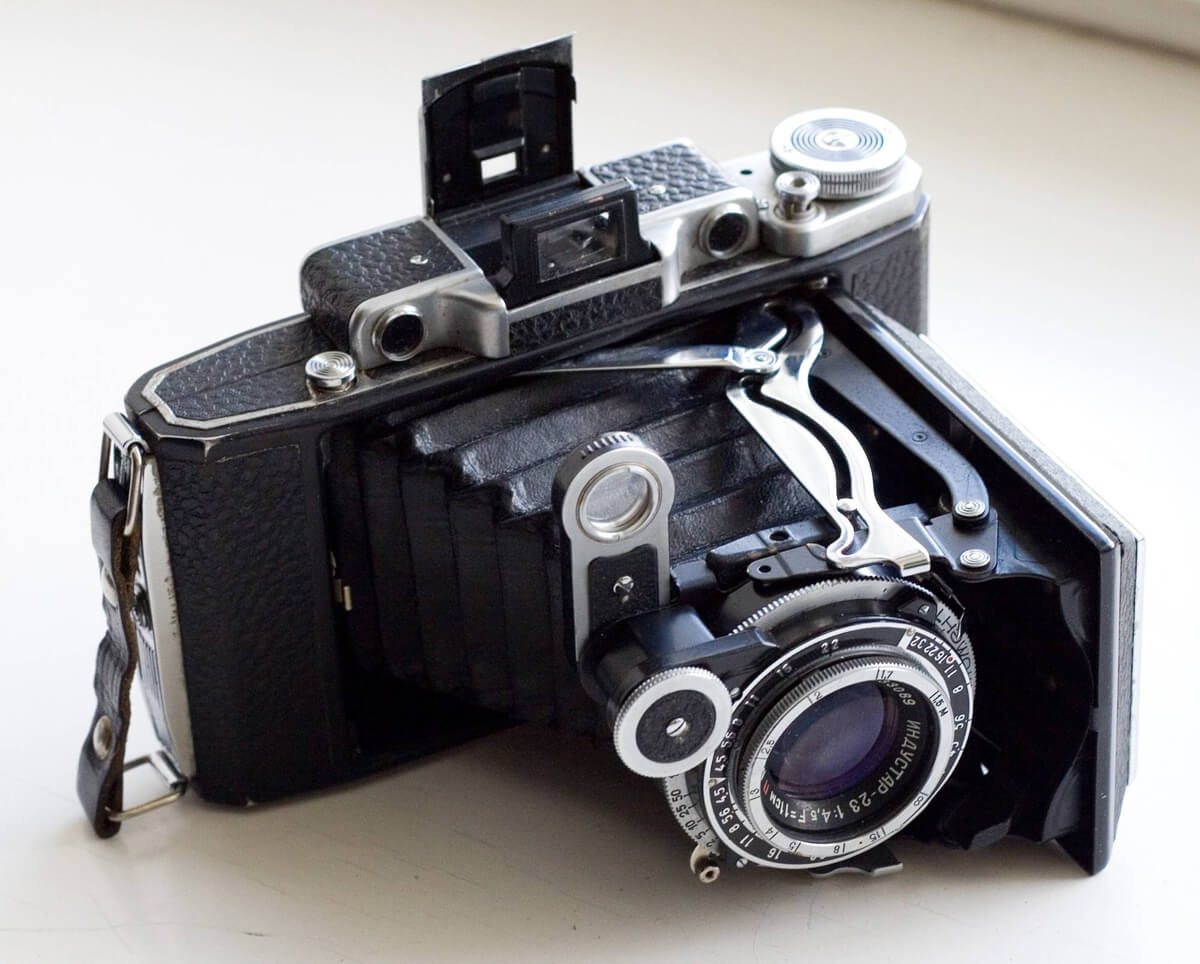I am always ready to try something new. So, when I came across an advertisement somewhere on the Internet for adapters that make a 35mm film usable in a medium format camera, I lept at it. The idea is great: it results in a completely different kind of picture because on the one hand the exposed 35mm film perforations are part of the picture and on the other hand you can take panoramic photos in just one step. I wanted to try that. I ordered the adapters from an Italian manufacturer, but they are now everywhere, made with 3-D printers.
To be on the safe side, I chose a 35mm film that I knew well, namely the Agfa APX 400. I usually only work with medium format, and then with ILFORD or Kodak films, almost exclusively black and white.
The next question was which camera to use. As it soon turned out, my choice was very limited, because the adapters do not fit the really good cameras with an image section of 6×6 cm. I also wanted to achieve the largest possible panorama cut. So in the end only the KMZ Moskva-2 remained with an image format of 6×9 cm.

Before I took the pictures shown here, I produced a test film: color negative film with ISO 400 (EI 400), developed in Caffenol. That was an interesting experiment, and it worked, but the pictures are ultimately too bad to show to an accomplished public audience. So I went out again and took the pictures shown here. This film was traditionally developed in Rodinal 1 + 50 and its title is “Who’s the main actor?”.
Please do not be surprised at the apparent disregard of design rules – that is exactly what this was about. I wanted to work against the convention in every way.





I’ve thought a lot about the philosophy behind this type of photography, and the bottom line remained: even if traditional cinema (made with films on film) is almost dead, many still know how it was. I try to keep the memory of it, and so my pictures are like excerpts (still pictures) from a movie. That’s why most of them are in portrait format, because in the projector the film runs from top to bottom over the spools.
The camera, the Moskva-2, is a Russian replica of the Zeiss Super-Ikonta, produced in the Soviet Union in the 1950s. I had it overhauled and it works fine. Only the viewfinder is a bit difficult because to focus you have to look through one eyepiece and to determine the image section you have to look through another. The gears are also worn beyond repair so that the focus is a bit like a lottery, but most of the time it works.
I hope you enjoy my pictures – I will certainly produce more of this type. Film’s not dead!
~ Martin
Submit your 5 Frames… today
Get your own 5 Frames featured by submitting your article using this form or by sending an email via the contact link at the top of the page.
Share your knowledge, story or project
The transfer of knowledge across the film photography community is the heart of EMULSIVE. You can add your support by contributing your thoughts, work, experiences and ideas to inspire the hundreds of thousands of people who read these pages each month. Check out the submission guide here.
If you like what you’re reading you can also help this passion project by heading over to the EMULSIVE Patreon page and contributing as little as a dollar a month. There’s also print and apparel over at Society 6, currently showcasing over two dozen t-shirt designs and over a dozen unique photographs available for purchase.








One response to “5 Frames… Of 35mm film in a Russian 6×9 camera and Agfaphoto APX 400 (35mm Format / EI 200 / KMZ Moskva-2 + Industar-23 110 mm f/4.5)”
Hi Martin,
I enjoyed your article a lot, thanks! Could you explain how many turns do you give the film advance knob on the Moskva for each image, as it looks like you got the spacing perfect!
Tony